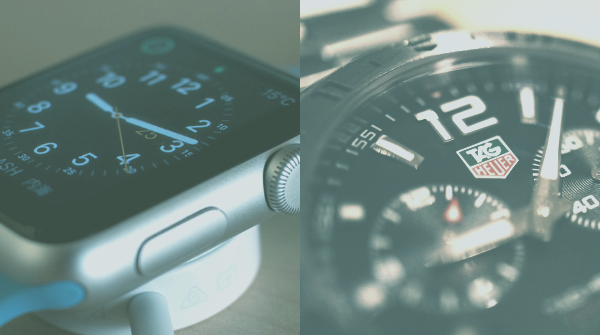Another Apple product I’m unlikely to purchase — a smartwatch. I don’t need more screens to look at frankly, but I doff my smartcap to the company for the way they’ve usurped an industry that already existed and then doubled it. This approach has some parallels to the AirPod strategy, which I looked at before : take a market that exists, wait until the technology works, have a couple of shots at it, dominate it and then expand it. Here are the latest numbers, courtesy of Strategy Analytics:

In short, Apple has not only grown its shipments by more than a ⅓, it’s eaten a sizeable portion of the Swiss watch industry’s cheese lunch. As SA’s Steven Waltzer puts it: “Traditional Swiss watch makers, like Swatch and Tissot, are losing the smartwatch wars. Apple Watch is delivering a better product through deeper retail channels and appealing to younger consumers who increasingly want digital wristwear. The window for Swiss watch brands to make an impact in smartwatches is closing. Time may be running out for Swatch, Tissot, TAG Heuer, and others.” The full report can be purchased here.
So let’s put this in a slightly broader perspective. This is a tipping point in the evolution of the watch and a hammer blow to the Swiss watch industry. While the figures don’t quite tally with Strategy Analytics’, those from the Federation of the Swiss Watch Industry show just how effective Apple has not only created a market for itself, but also usurped another’s. For years the Swiss watch industry had been relatively settled, only to see Apple — and knee-jerk competitors like Huawei and Samsung, who have also carved a market for themselves on Apple’s coat-tails — gradually erode their business. Last year shows just how far it has gone:

This is classic Apple in many ways. There were lots of ‘this is make or break for Apple’ type stories in the first year, and overblown predictions of 2015, and 2016, had to be revised. Indeed, while overall shipments of smartwatches rose in 2016 (from 20.8 million to 21.1 million, according to Strategy Analytics, Apple’s shipments actually shrunk, while others rose. But these were teething problems: sensors needed to be more accurate, sales channels with telcos needed to be tweaked. By 2017 Apple had fixed most of this, and the trajectory is clear. Probably more importantly, consumers realised that if you were going to put a smartwatch on your wrist, it had to be a classy one. There was no ‘good enough’ syndrome for that bit of prime real estate. And, like the Air Pods, the device needs to have a seamless relationship with the parent device.
Lessons learned? I once again wasn’t convinced about the smart watch. I haven’t bought one, and don’t intend to. But I get it; Apple is currently making much from the stories of how these devices may have saved lives. This isn’t the reason people buy these things, but it’s a good argument to win over the spouse, or conscience, and it does point to how, eventually, medtech and consumer device will merge beyond the hobbyist and fitness fanatic. And it’s not hard to see how soon enough the ear piece and the wrist will eventually become The Device, and we can ditch the smartphone altogether.
